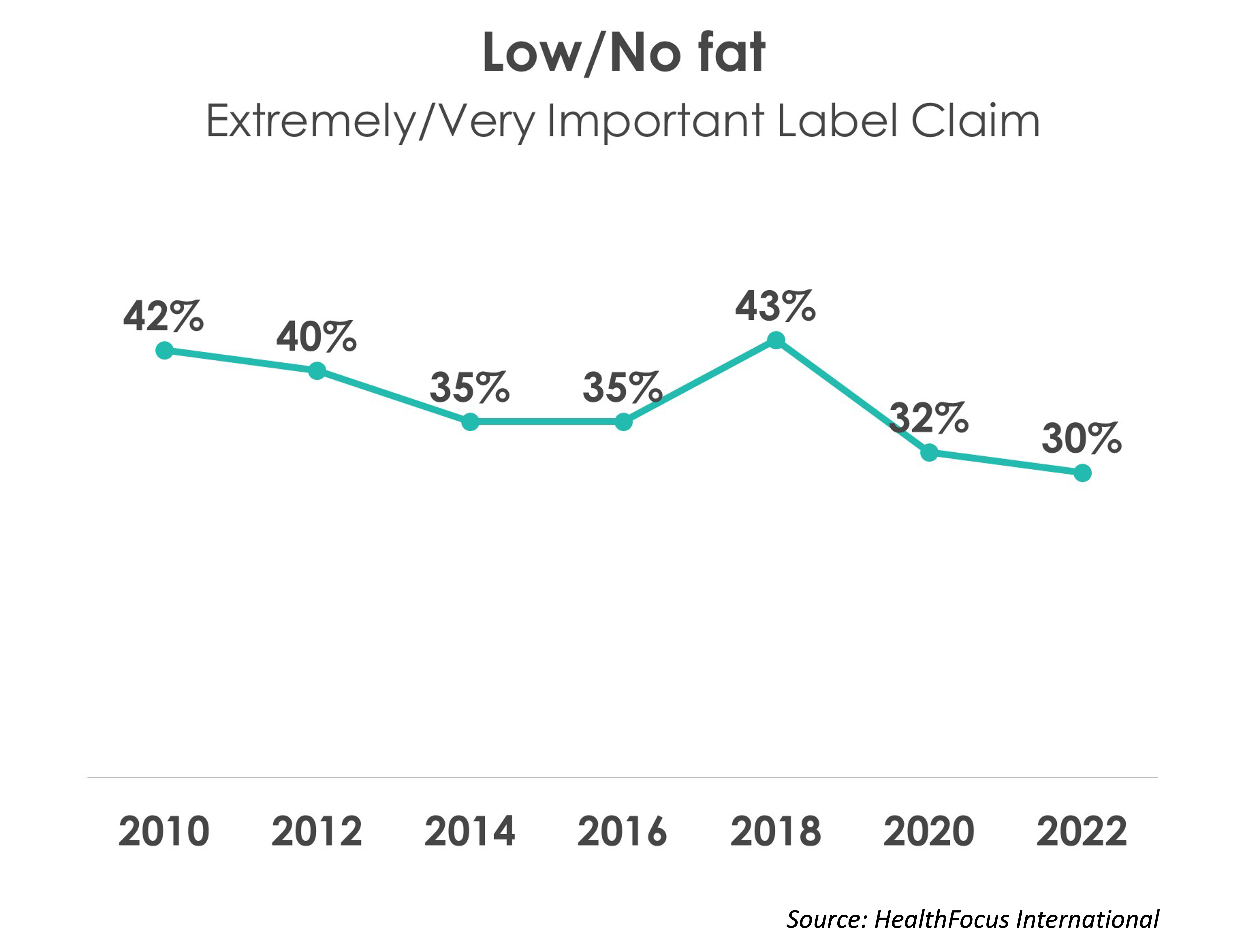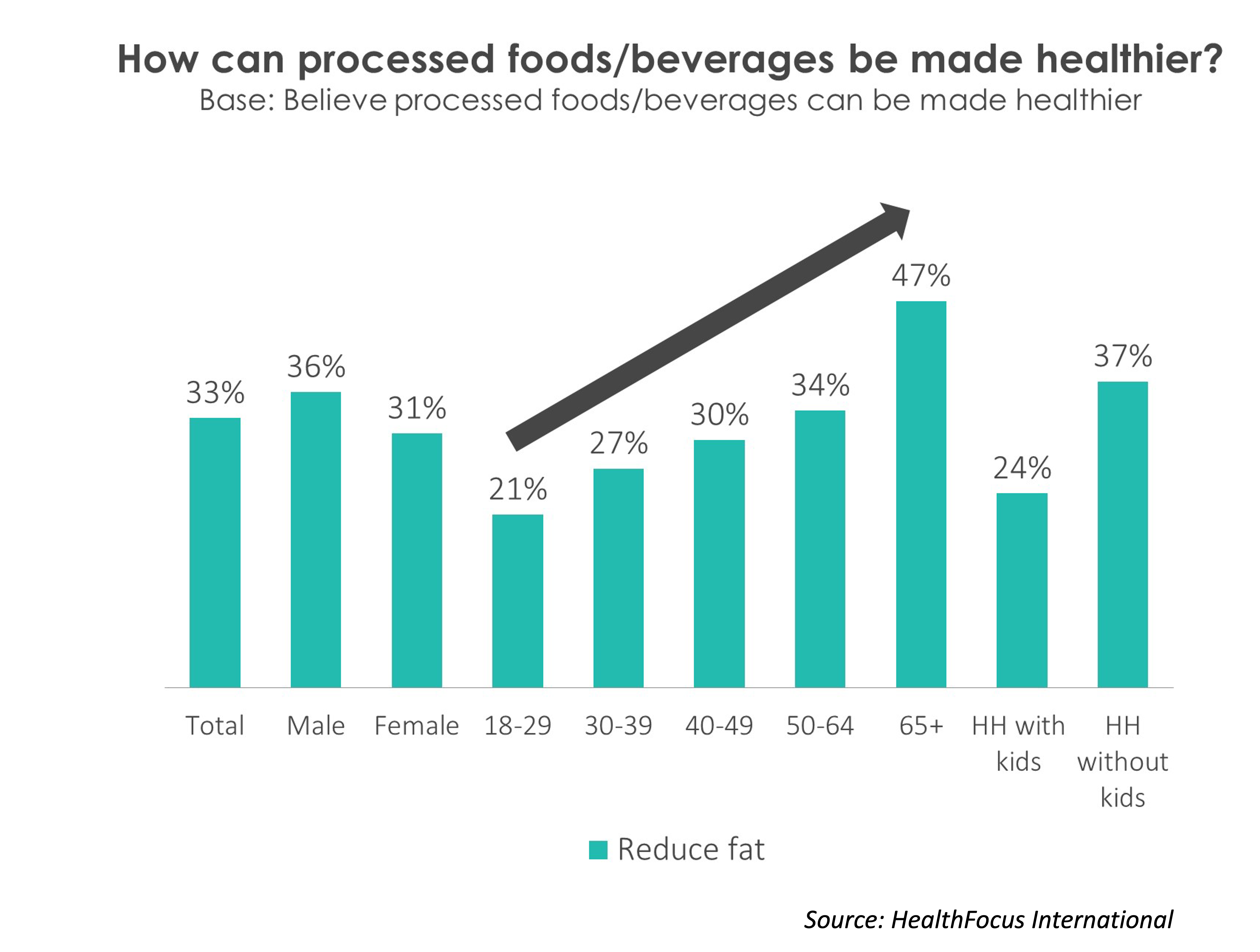For many decades, fat has been the nutrient that could do no good. But as new science has emerged, consumer perceptions are shifting. In many cases, consumers are now more worried about sugar than fat.
This shift is particularly noticeable in the US, where fresh research from consumer insights firm HealthFocus International indicates that American consumers’ acceptance of fat continues to grow.
In the report Good Fat, Bad Fat, published in May 2023, HealthFocus asked 2,093 US consumers about their attitudes towards different types of fat. The results show that the number of consumers who consider “low/no fat” an extremely or very important claim for food and beverages has been decreasing steadily, from 42% in 2010 to 32% in 2020 and 30% in 2022.

Interestingly, the study found that the consumers that appear to be the least worried about fat are the young. Only 21% of consumers aged 18-29 agreed that “reducing fat” would be a key way to make a processed food or beverage healthier, compared to 47% of 65+ year-olds.

According to Julie Johnson, President at HealthFocus, this attitude shift may depend on a mixture of changing dietary guidelines, a change in the media conversation about fat, and the arrival of the internet, which led to an increasing fragmentation of beliefs.
“While older groups absorbed decades of instruction in low-fat eating and promotion of fat-free foods, there is far less emphasis on these ideas now. Government recommendations used to be one of few sources of nutrition information, but social media has opened the discussion to dozens of varying opinions on which foods and diet patterns are best. Consumers have access to a vast range of nutrition suggestions now, and young consumers are less likely than older consumers to have already adopted an idea of a more narrow-focused “right” way of eating,” Johnson told New Nutrition Business in an interview.
The HealthFocus study further noted a decrease in the villainization of animal fats among the young. For example, consumers aged 18-39 are about half as likely to rate tallow (fat from cattle or sheep) as ‘bad fat’ as those aged 65+. However, Johnson is careful to point out that “our data isn’t necessarily showing a broad embrace of animal fats so much as decreased villainization.”
Access the full HealthFocus report here: https://www.healthfocus.com/lpage/good-fat-bad-fat/

